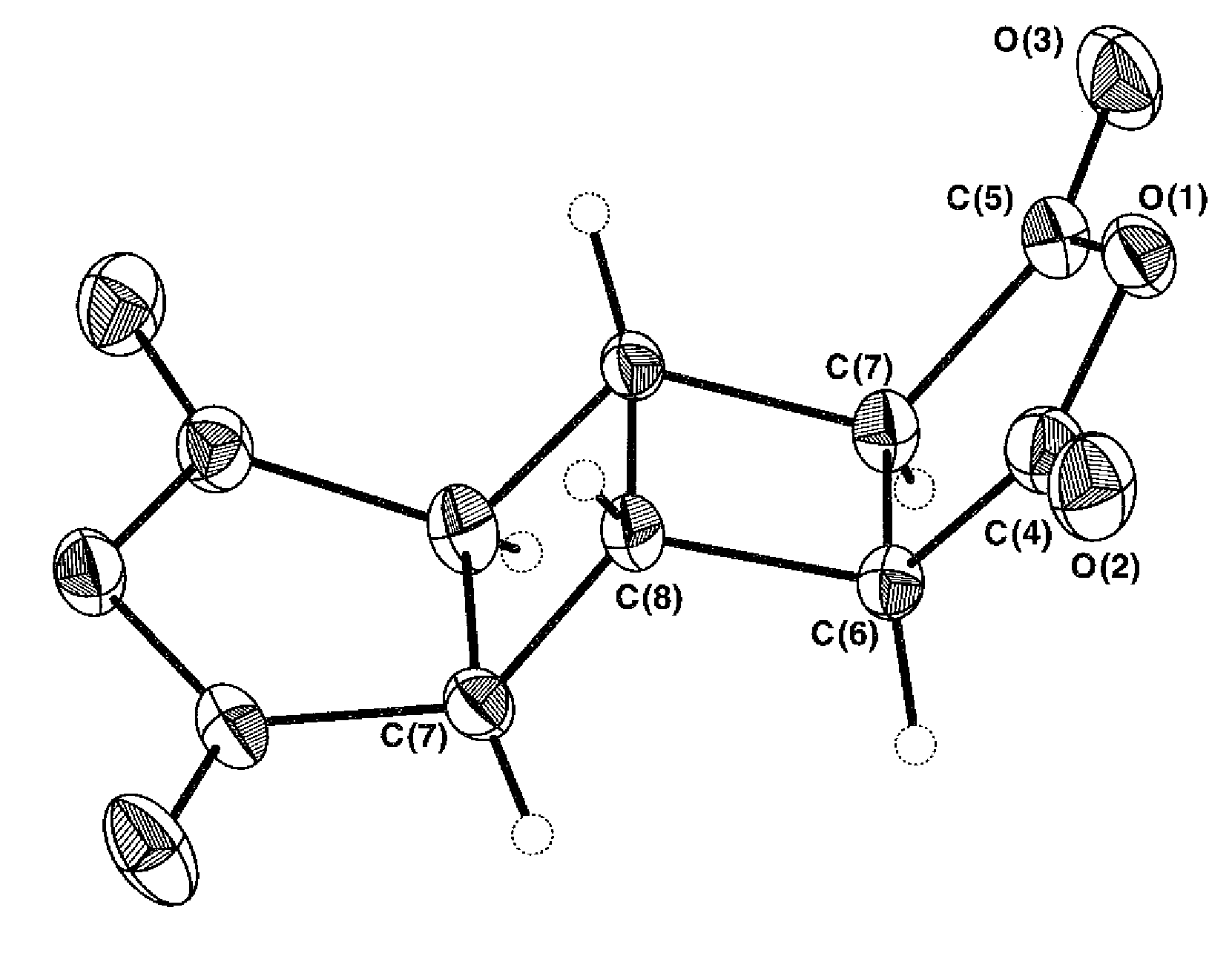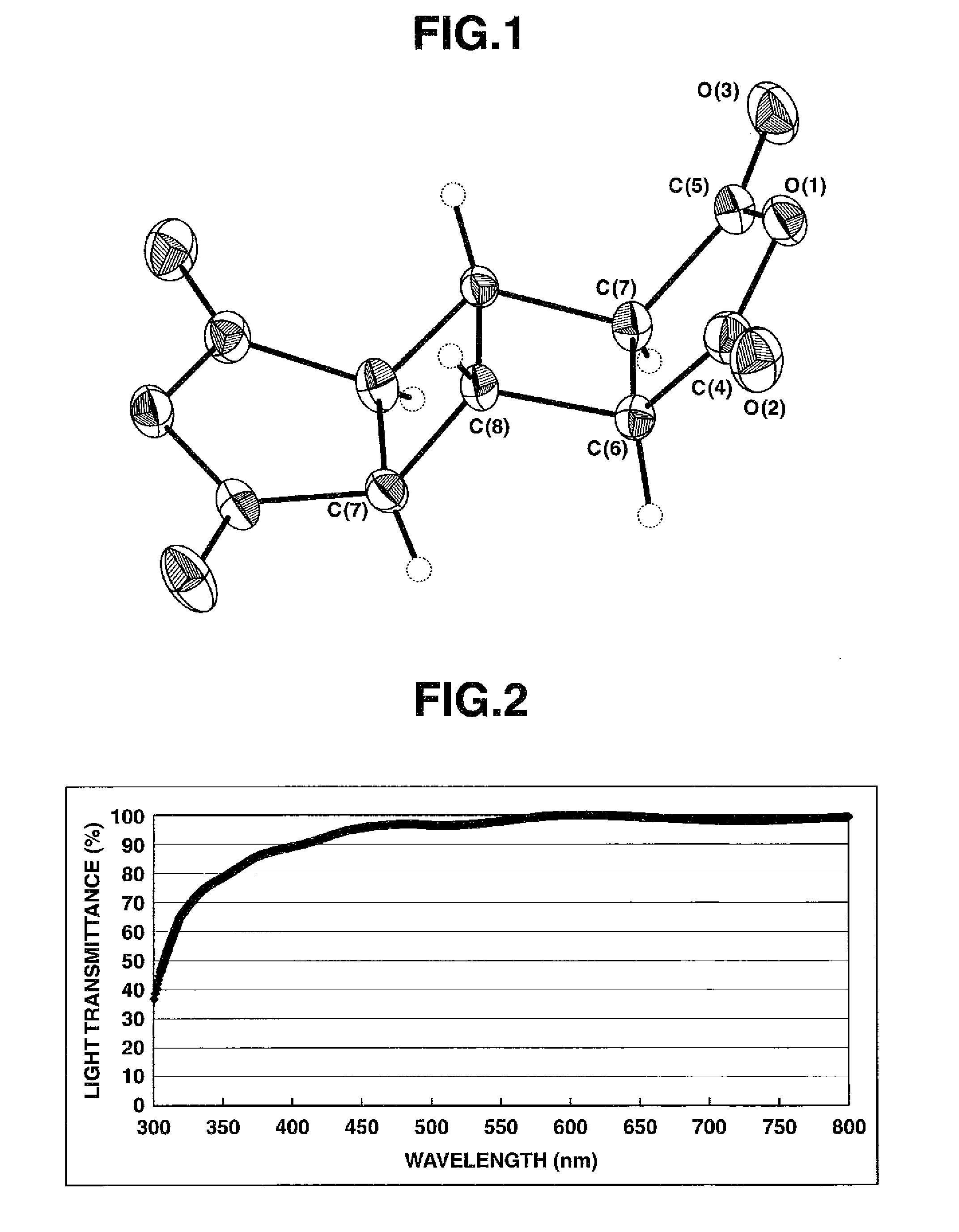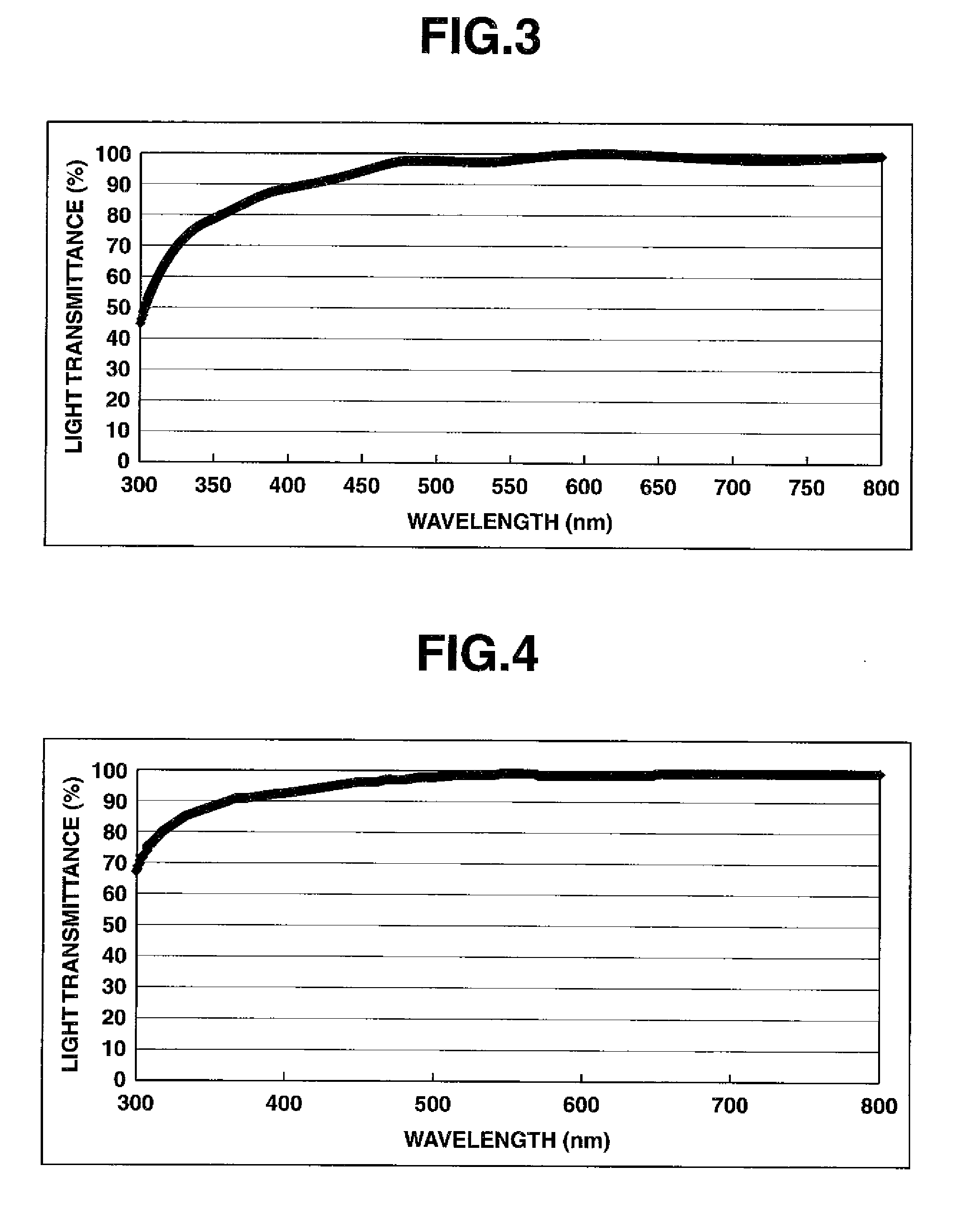Polyamic acid and polyimide
- Summary
- Abstract
- Description
- Claims
- Application Information
AI Technical Summary
Benefits of technology
Problems solved by technology
Method used
Image
Examples
synthesis example 1
Synthesis of BHA
[0092]
(1) Synthesis of Intermediate DCBA
[0093]After cis-1,2-dichloroethylene (65.2 g, 673 mmol), maleic anhydride (60 g, 612 mmol) and ethyl acetate (1,200 g) were charged into a 2,000 mL photoreactor made of “PYLEX”® glass and were stirred at room temperature into a solution, the solution was irradiated at 21 to 23° C. for 48 hours under stirring by a 400 W high-pressure mercury lamp (internal irradiation).
[0094]After the reaction, the reaction mixture was concentrated to obtain crystals (105.6 g). Toluene (180 g) was added dropwise to the crystals, and the resulting mixture was heated under reflux into a slurry. At 80° C., hexane (180 g) was then added dropwise, followed by stirring. The resulting solution was allowed to cool down to 20° C. while being left at rest. Precipitated crystals were collected by filtration, washed with toluene and with hexane, each once, and then dried to afford white crystals (94.6 g, yield: 79.3%).
[0095]From a 1H-NMR spectrum, those cry...
example 1
Synthesis of BHA-p-PDA Polyamic Acid and Polyimide
[0104]
[0105]p-Phenylenediamine (p-PDA) (0.324 g, 3.00 mmol) and 1-methyl-2-pyrrolidone (NMP) (8.9 g, solid content; 10 wt %) were charged into a dried 4-necked reaction flask, and were then formed at 18° C. (room temperature) into a solution while stirring them with a mechanical stirrer. Subsequently, BHA (0.666 g, 3.00 mmol) was added, followed by stirring at 20° C. and 160 rpm for 24 hours with the mechanical stirrer.
[0106]At that time point, the resultant BHA-p-PDA polyamic acid polymerization solution was sampled and measured for its molecular weight. As a result of a measurement by GPC, its number average molecular weight (Mn) was 16,717, its weight average molecular weight (Mw) was 17,191, and Mw / Mn was 1.028.
[0107]The thus-obtained BHA-p-PDA polyamic acid polymerization solution was coated onto 8 cm×10 cm glass plates by using (1) a 25 μm doctor blade and (2) a 200 μm doctor blade, respectively. Subsequently, the coatings were...
example 2
Synthesis of BHA-DDE Polyamic Acid and Polyimide
[0114]
[0115]4,4′-Diaminodiphenyl ether (DDE) (0.601 g, 3.00 mmol) and NMP (11.4 g, solid content: 10 wt %) were charged into a dried 4-necked reaction flask, and were then formed into a solution at 18° C. (room temperature) while stirring them with a mechanical stirrer. Subsequently, BHA (0.666 g, 3.00 mmol) was added, followed by stirring at 18° C. and 160 rpm for 24 hours with the mechanical stirrer.
[0116]At that time point, the resultant BHA-DDE polyamic acid polymerization solution was sampled and measured for its molecular weight. As a result of a measurement by GPC, its number average molecular weight (Mn) was 23,593, its weight average molecular weight (Mw) was 24,215, and Mw / Mn was 1.026.
[0117]In a similar manner as in Example 1, polyimide films were next formed, and their thicknesses, imidation rates and light transmittances were measured. The results are shown in the following table.
TABLE 2Light transmittanceDoctorFilmImidati...
PUM
| Property | Measurement | Unit |
|---|---|---|
| Fraction | aaaaa | aaaaa |
| Fraction | aaaaa | aaaaa |
| Fraction | aaaaa | aaaaa |
Abstract
Description
Claims
Application Information
 Login to View More
Login to View More - R&D
- Intellectual Property
- Life Sciences
- Materials
- Tech Scout
- Unparalleled Data Quality
- Higher Quality Content
- 60% Fewer Hallucinations
Browse by: Latest US Patents, China's latest patents, Technical Efficacy Thesaurus, Application Domain, Technology Topic, Popular Technical Reports.
© 2025 PatSnap. All rights reserved.Legal|Privacy policy|Modern Slavery Act Transparency Statement|Sitemap|About US| Contact US: help@patsnap.com



